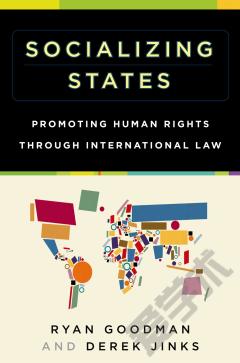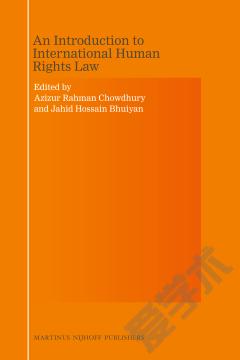Socializing States —— Promoting Human Rights through International Law
----- 社交国:通过国际法促进人权
Table of Contents Chapter 1. Introduction: Rethinking State Socialization and International Human Rights Law A. The Empirical Study of International Law B. Objectives of the Project C. Theorizing State Socialization D. Advancing the Understanding of State Socialization E. Outline of the Book PART I. A THEORY OF INFLUENCE Chapter 2. Three Mechanisms of Social Influence A. Material inducement B. Persuasion C. Acculturation 1. Acculturation as Incomplete Internalization: Distinguishing Persuasion 2. Acculturation as Social Sanctions and Rewards: Distinguishing Material Inducement D. Illustration: Mechanisms of Influence in The Global Diffusion of Markets and Democracy Chapter 3. Acculturation of States: The Theoretical Model A. Socialization of the State B. Acculturation and the Patterns of State Practice 1. Isomorphism across states 2. Decoupling within states 3. Global integration correlation 4. Social networks correlation 5. Institutionalization correlation 6. Contagion effects: adoption by other states is a predictor of subsequent adoption 7. Lack of correlation with geopolitical vulnerability or with powerful states' interests 8. Discerning the Process of Micro-Acculturation: Qualitative analysis and case studies Chapter 4. Acculturation of States: The Empirical Record A. Studies Outside of Human Rights 1. Environmental policy and public education 2. Network effects B. Human rights studies 1. Constitutional design 2. Substantive rights protections: Children's rights and women's rights 3. Network effects and human rights 4. Regional/ " effects: Simmons' Mobilizing for Human Rights C. Objections and Clarifications 1. Does our account assume acculturation spreads desirable laws and policies? 2. Could material inducements provide an equally plausible explanation of the observed behavior? 3. Is global-level acculturation driven by hegemonic interests? PART II. APPLICATIONS FOR INTERNATIONAL HUMAN RIGHTS REGIME DESIGN Chapter 5. Conditional Membership: Socialization and the Community Delimitation A. Material inducement B. Persuasion C. Acculturation Chapter 6. Precision of Legal Obligations: Socialization and Rule-making A. Material inducement B. Persuasion C. Acculturation Chapter 7. Monitoring and Enforcement: Socialization and Rule-breakers A. Material inducement B. Persuasion C. Acculturation PART III. PROBLEMS AND PROSPECTS OF STATE SOCIALIZATION Chapter 8. State Acculturation and the Problem of Compliance A. Acculturation without Decoupling B. Acculturation with " or " Decoupling C. Decoupling and " Reform D. Moving beyond Decoupling: The progression of acculturation 1. Domestic political opportunity structure 2. The " I: External audience effects 3. The " II: Internal " effects 4. Escalating demands by global civil society 5. Evolutionary state learning 6. The causal dispensability of domestic civil society/NGOs E. Managing Decoupling: Designing institutions to reduce the gap Chapter 9. Toward an Integrated Model of State Socialization A. Taking Acculturation Seriously B. Negative Interactions between Mechanisms 1. Conveyance of prevalence information 2. Overjustification and social signaling 3. Overjustification and self-perception 4. Overjustification and self-determination 5. " C. Sequencing Effects D. Conditions for Mechanism Success 1. Targeting Capacity and Target Actor Characteristics 2. Influence agent characteristics Chapter 10. Conclusion: Taking Stock and Future Research A. Our Major Empirical Claims B. Our Major Normative Applications C. Future Normative Work D. Future Empirical Work
{{comment.content}}








 京公网安备 11010802027623号
京公网安备 11010802027623号